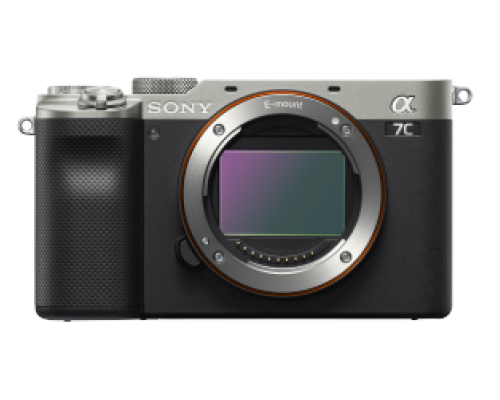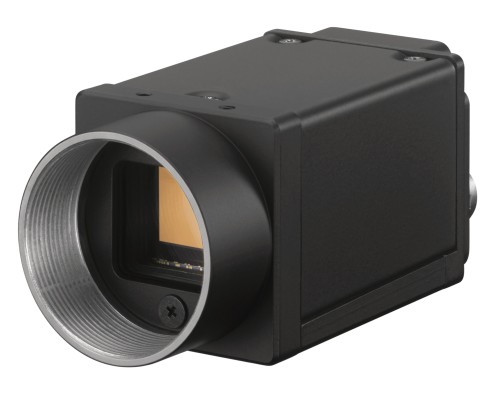
Sony Alpha camera supported by Sony SDK (Software Development Kit)

Sony Alpha camera supported by Sony SDK (Software Development Kit)

Digital Video Camera using various interfaces (USB, Gigabit Ethernet, Camera link)
INSPECTIS AB has always been a ground-breaker when it comes to digital optical microscopes. Having launched the world's first 4K resolution digital microscope in 2018 with the Series U10, the Sweden-based company kept pushing boundaries by introducing the more powerful U30 a few years later. Now, INSPECTIS is setting the pace of innovation once again with the launch of its Series U50 digital camera microscope featuring a 4K system with an exceptional frame rate of 60 FPS, while boosting the zoom range from 30x to 50x. This capability is ideal for applications where ultra-high resolution is needed for fast-moving inspection or live working tasks.
Throughout this history of product innovation, INSPECTIS has partnered with Sony Image Sensing Solutions (ISS) for the highest quality cameras for its digital microscopes, providing unrivalled visualization, magnification, and image capture. INSPECTIS and Sony ISS have forged a strong working relationship over many years, culminating in the use of Sony's FCB-ER9500 camera for the cutting-edge Series U50.
"We have been using Sony ISS cameras since 2008 and have always been very happy with the quality of the products and the technical cooperation we have received," says Sasan Esmaeili, founder and chief executive of INSPECTIS. "This partnership has led to the launch of the Series U50, which doubles the speed and extends the zooming capability of our 4K range of microscopes. In tandem with our accessories and software, it is the ultimate ultra-high-resolution solution for fast-moving inspection."
Pioneering precision in electronics inspection
INSPECTIS digital microscopes based on Sony cameras are used for multiple applications. Electronics represents around 70% of the market, with microscopes used in several specific ways. They are used to inspect bare printed circuit boards for any defects before any components are added and to check the application of solder paste to ensure it is correctly applied to the board. The high magnification of the cameras allows for the inspection of tiny components, akin to the size of a grain of sugar, to verify their accurate placement on the solder-pasted board. After the solder has been melted in the oven, the microscopes ensure that components have not shifted out of place.
Meanwhile, they are also used throughout the assembly process and in the development of electronic components to ensure quality and precision. The 4K resolution is particularly beneficial for these tasks due to its high resolution, which is essential for static items. However, when it comes to dynamic processes such as manual rework or assembly under magnification, the 60 FPS frame rate of the Series U50 is crucial as it allows for a smoother visualization of moving parts.
Another burgeoning area is MedTech, where digital microscopes are used to visually inspect medical inserts such as stents to check for imperfections. Stents require 100% visual inspection under a microscope, and the manual handling of devices during this process can be pretty rapid. Here, the higher frame rate of the Series U50 is hugely beneficial, providing clear and fluid visualization of the items with no lag.
Sony's FCB-ER9500 Camera: The heart of innovation
This is where Sony's FCB-ER9500 camera delivers. It features Sony's STARVISTM 2 image sensor for outstanding image quality in extreme low light environments as well as in the brightest lit conditions. The 25x optical zoom can capture incredible detail in 4K high-resolution, with 60 frames per second. Meanwhile, the camera block comes in a lightweight, compact body, making it well-suited for integration into digital microscopes, which are often used in settings where working space is at a premium.
"Sony has always kept us fully up to date with its internal product development, and we were made aware of the roadmap of the FCB-ER9500," says Sasan Esmaeili. "We collaborated closely with Sony's technical teams to understand how this camera could be integrated into our microscope range to deliver value to customers in our markets. The FCB-ER9500 frame rate was extremely impressive, providing superior image stabilization. The zoom range was also important for us, as it provides exceptional magnification without needing additional lenses, which can impact the working distance and cause issues with user comfort during operation. These attributes made it perfectly suited for electronics and MedTech applications."
A new Eera in digital microscopy
With the image sensor selected, INSPECTIS designed the housings, enclosures and cabling, and refined the packaging and ergonomics to create a fully integrated digital microscope.
"The introduction of the U50 Series represents a new era in digital microscopes," says Alistair Gooch, Sales and Marketing Manager, INSPECTIS. "The 60 FPS and 50x zoom range sensor provides higher sensitivity and dynamic range than previous 4K cameras. The compact design means the U50 Series has the smallest cross-section of any microscope of its kind on the market today. Furthermore, the new microscope offers plug-and-play integration with our accessories and software, making it a logical extension for existing users. We believe the new U50 will become the most popular choice when ultra-high resolution is needed for fast-moving inspection or live working tasks. For those more demanding tasks, U50 may become the only microscope needed."
Looking forward, INSPECTIS remains a partner with Sony ISS, thanks to its image-sensing product portfolio strength and excellent service and support. Sasan Esmaeili believes the 4K, 60 FPS solution will remain in the INSPECTIS lineup for many years to come.
“Having a world-leading company such as Sony ISS as our image sensing partner has been very advantageous. We look forward to working with Sony ISS long into the future as we continue to revolutionize digital microscopy.” Concludes Sasan.